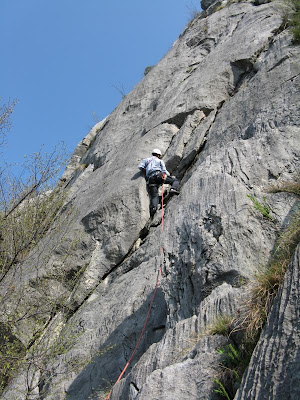This is my second post (here the first) about my ideal jacket, which I’ll try to create during the Gore/Mammut Experience Tour - 4 days visiting the Mammut headquarters and laboratories when I’ll have the opportunity to build my own unique jacket.
This time I’ll speak about practical features I’d like from my jacket, in the spirit of the five principles I focused on before (durability, windproofness, waterproofness, freedom of movement, usability). As an engineer, after the ideation phase, I have to “get real”, choosing practical solutions to problems and desired characteristics. And the quality of such solutions makes the whole feeling of the product: perfect details means great products, while poor design or materials means an overall “cheap” experience.
This time I’ll speak about practical features I’d like from my jacket, in the spirit of the five principles I focused on before (durability, windproofness, waterproofness, freedom of movement, usability). As an engineer, after the ideation phase, I have to “get real”, choosing practical solutions to problems and desired characteristics. And the quality of such solutions makes the whole feeling of the product: perfect details means great products, while poor design or materials means an overall “cheap” experience.

Winter alpine climbing on Mount Resegone, near Lecco.
Now, about the features, considering that I’m going to to alpine climbing, multipitch rockclimbing and snow activities, I came up with these, ordered from the physical top to the bottom:
It remains open one of the biggest questions: what materials to use. Gore-tex Pro Shell? Or the new Active Shell? Or other types?
- A good hood: it should be helmet-compatible, and possibly protect the face up to the nose, to be a good shelter from the cold wind; the top of the hood should be given a cap-shape, in a way that protects from the rain while not covering the eyes and obstructing the sight.
- Shoulder freedom: the arm should be as free to move as possibile, so extreme care should be taken in designing this part of the jacket; stretch textile could be a nice solution.
- Adjustable cuffs: so that wind and snow can’t get in. A bonus feat could be an extension of the sleeve with a thumb hole, which can replace gloves in case of mild cold.
- Pockets in the right places: this also mean few pockets, because too many pockets make the jacket stiff, and you don’t need too many pockets. For me, two lateral pockets you can put your hands/gloves into are the most useful; an importat detail is that the internal of these pocket should be of a material immune to velcro: I have gloves who have a bit of velcro on their surface, and I don’t want them to stick to the pocket internals every now and then! The third and last pocket should be on the chest, in the inside: a good place for a mobile phone, o eventually a small camera, where it’s not completely exposed to the cold weather (electronics go awry in the cold).
- Protection for the back: among the worst things are snow in the pants, or cold wind up your back! So an elongated back section is a must.
- Waterproof zippers: of course! In addition, the zippers should be usable even with large and clumsy gloves. The front zipper, the one which opens the jacket, could benefit from a 2-way zipper, which comes in handy when wearing climbing gears; the pocket zippers are ok with a standard 1-way zipper, which enhanches consistency (for example you know that if the pocket is closed you always have to zip-down to open it).
- Vibrant colors: alongside with a design matter, colors are important in case of a mountain rescue, so people can see you easily. So red, electric blue, yellow, orange, vibrant green are ok. The problem now is how to mix up them! But this is another challenge ;)
It remains open one of the biggest questions: what materials to use. Gore-tex Pro Shell? Or the new Active Shell? Or other types?




